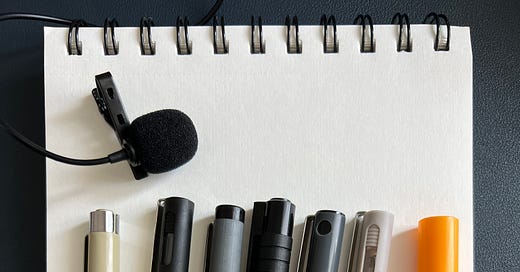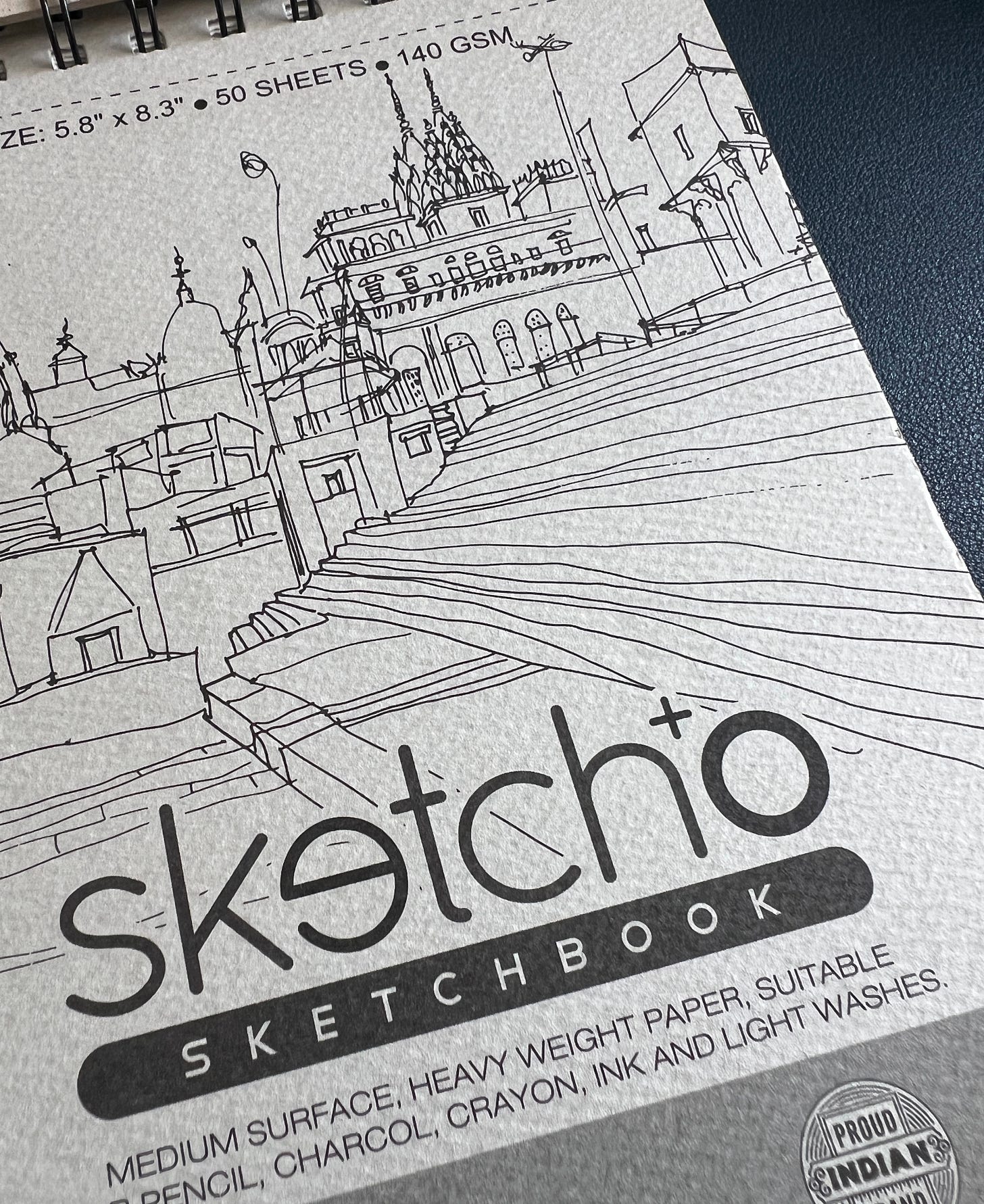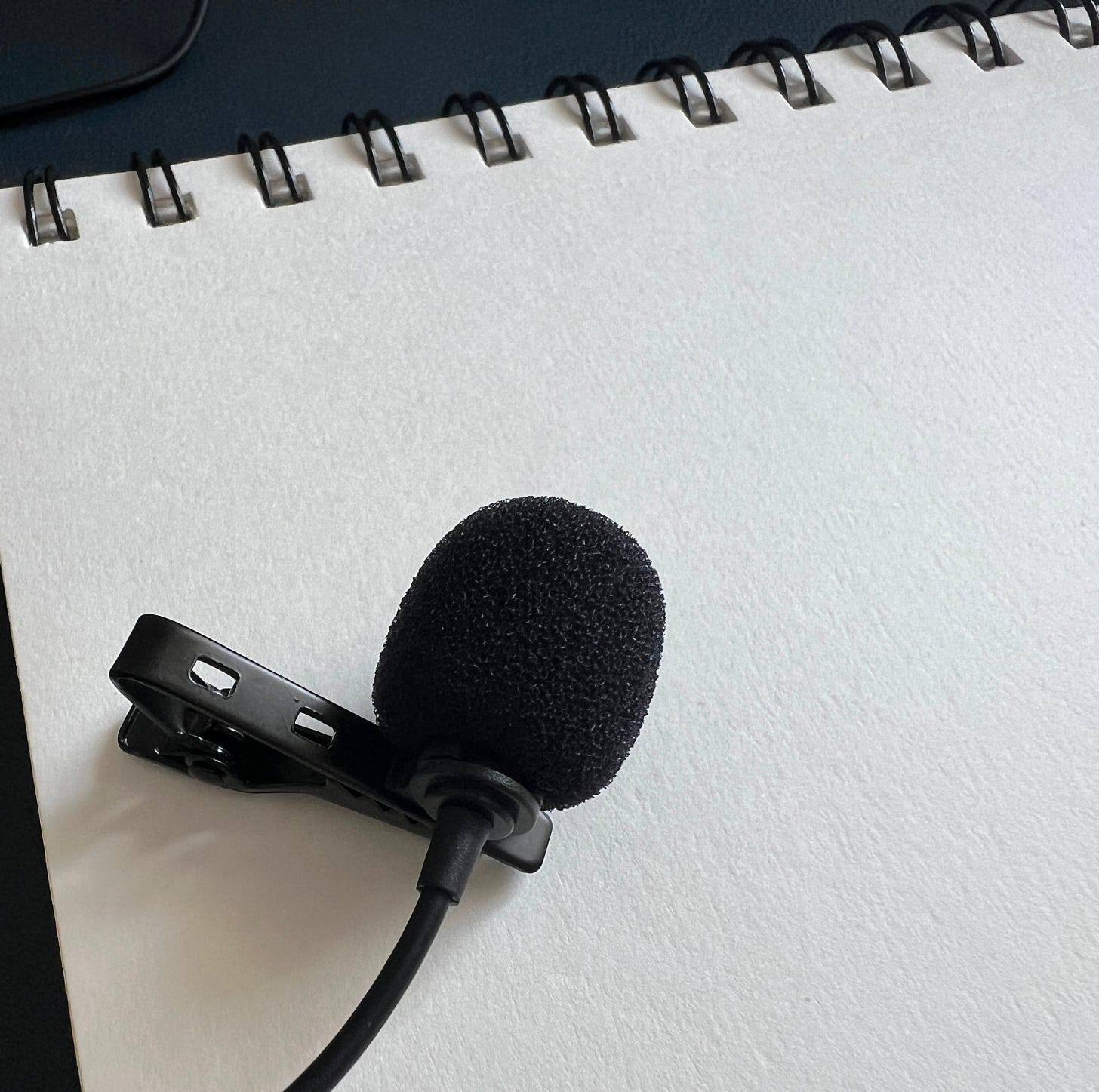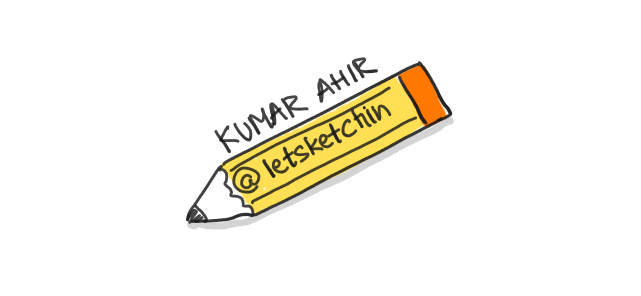Hey visual thinkers,
Have you ever stopped to listen to your sketching?
Not the content.
Not the voice in your head narrating.
But the actual sound —
The scratch, scrape, glide, or tap your pen makes as it meets paper?
As I was sketchnoting I opened one of my favorite podcast - TwentyThousand hertz.
And that sparked ⚡️an idea for an experiment. Recording the audio of nib while writing on paper.
No big goal. Just pure curiosity 🧐.
This newsletter is going to be multi sensory, put your headphones on.
👋 Hello visual learners, I’m Kumar and welcome to my weekly newsletter.
Each week I share Sketchnote(s) on product, leadership, personal growth, and anything that helps you get started on Sketchnoting.
🎧 The Setup
🗒️ Paper: 140 GSM, medium surface, slight tooth —
Thick enough to hold ink, textured enough to talk back. Do I use this pad for sketchnoting? Not often because of the size and paper texture.
A mic laid on the paper as close to nib’s action as possible.
🖊️ Tools tested:
Six pens with different nib sizes and types:
Unipin Fineline 1.0
Staedtler Pigment 0.4
Faber Castell Pitt Artist 0.1
Sakura Pigma Graphic 1
Pilot Hi-Tecpoint V5
Luxor Chisel Marker
Each one scribbled the same text - The Sketchnoters.
Each one left its own audible fingerprint.
🔊 What I Heard and what it looks 🔎 like
Unipin Fineline 1.0
crisp scratch — like walking on dry
Staedtler Pigment 0.4
smooth, polite, almost shy.
Faber Castell Pitt Artist 0.1
a faint tap-scratch combo — reliable, mechanical.
Sakura Pigma Graphic 1
swooshy drama — changing pitch with pressure.
Pilot Hi-Tecpoint v5
slightly sticky roll — juicy, like ink had weight.
Luxor Chisel Marker
elegant glide — like silk dragging across canvas.
Each pen sounded the way it feels to use.
Each one gave a different emotional experience — before the sketch even meant anything.
And here’s how it looks like in a visualized waveform.
To make the waveform I had to amplify the sounds to 20db. I used Audacity, an opensource cross platform software to record and edit audio.
I used an online tool WaveVisual to general waveform of the audio.
So what’s the final outcome of this exercise? Any observations?
FUN. That’s all.
This activity can lead to many deep scientific and empirical study to observe the mood and influence of sound while sketchnoting or writing. But that wasn’t the objective.
It was a FUN activity after all.
Creating opportunities means looking where others are not.
~=~ Mark Cuban ~=~
🧠 Why Does This Matter?
Because sketchnoting isn’t just visual.
It’s tactile. Auditory. Emotional.
Sound can:
Change your rhythm.
Affect how long you linger on a line.
Influence the tone of what you’re expressing.
And maybe…
Listening to your tools is another way to listen to yourself.
By the say last year we did an AtomicSketch challenge of sketching different sound.
🎨 Your Turn to Try It
Find a quiet space.
Grab a pen. Or six.
Sketch a few lines — but this time, close your eyes…
And just listen.
What do you hear?
What feeling does the sound give you?
📝 Share Your Sonic Sketch Moment
If this idea resonates, sketch something today and pair it with:
A note on which pen you used
A description of the sound
Or… a little audio clip? 🎙️
Tag it with #SoundOfSketch
Let’s see how each of us hears differently.
Until next time—listen to your sketchnotes (literally).
And trust your pen and paper to help you out.
Thank you for reading Letsketchin. 🥧










Love it! Such a fun idea to consider the sound of sketching and sketchnotes.
I resisted using an iPad to create sketchnotes for a long time simply because I preferred the tactile sensation of pen on paper. The resistance of the pen on the paper just felt better.
Thanks for sharing your experiment with us!